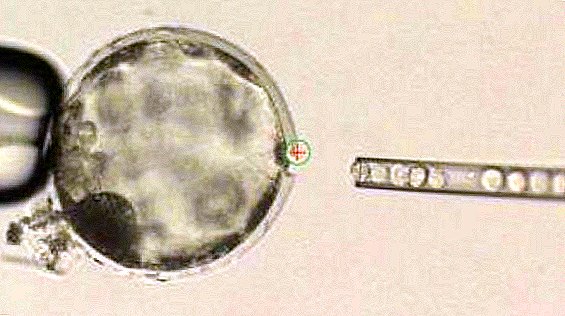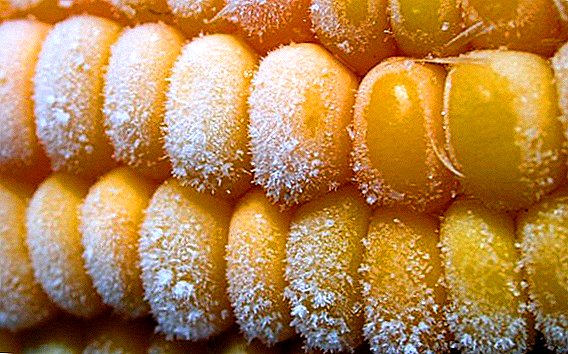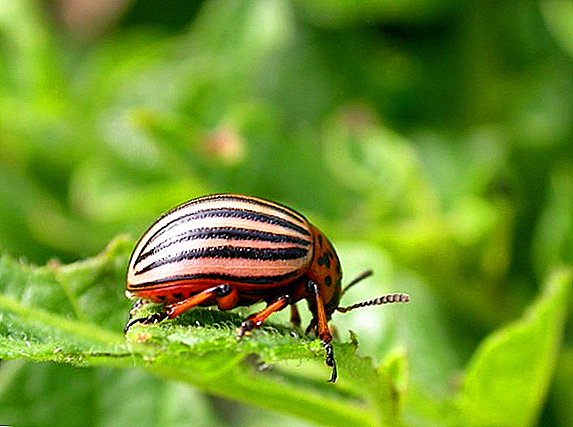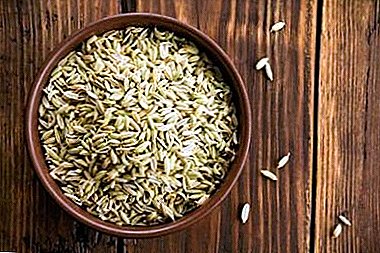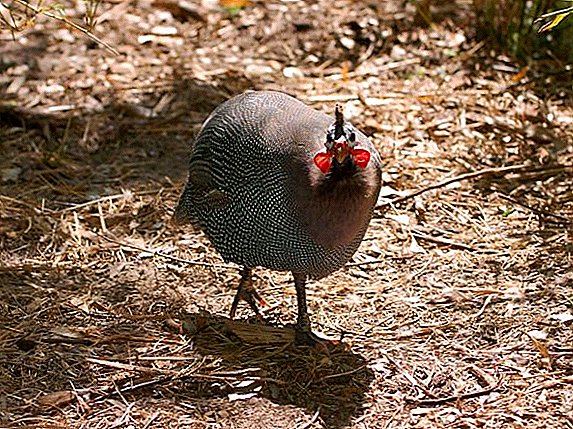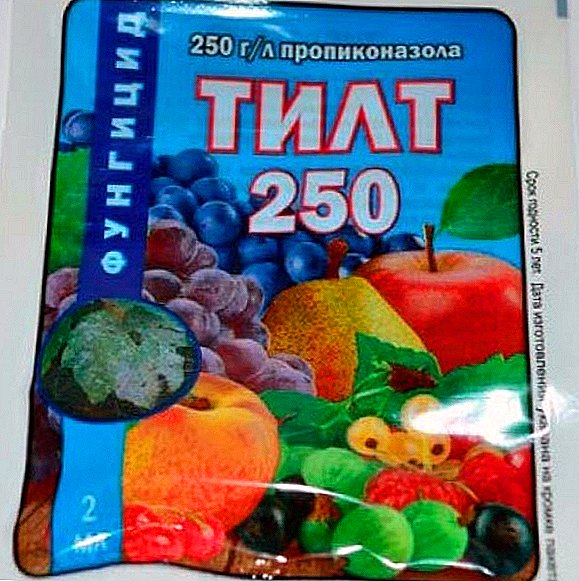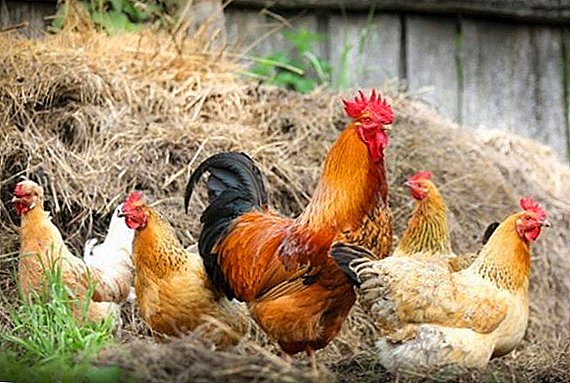 Healthy poultry is the dream and goal of any poultry farmer. That is why the owners should carefully monitor their wards, noting changes in behavior and appearance. In particular, it will help identify and cure a disease such as aspergillosis in time. Let's learn more about the causative agent of this disease, its main symptoms, methods of treatment and prevention.
Healthy poultry is the dream and goal of any poultry farmer. That is why the owners should carefully monitor their wards, noting changes in behavior and appearance. In particular, it will help identify and cure a disease such as aspergillosis in time. Let's learn more about the causative agent of this disease, its main symptoms, methods of treatment and prevention.
What is this disease
Aspergillosis (pneumomycosis, pneumonia, mold mycosis) is an infectious disease caused by mold fungi. All kinds of domestic animals suffer from it.
A dangerous disease occurs with damage to the respiratory system and the serous membranes of other organs (liver, intestinal tract, kidney, spleen, central nervous system, etc.). People also have aspergillosis.
Causative agent of aspergillosis
The fungus becomes mold fungi of the genus Aspergillus, mainly belonging to the species Asp. fumigatus, the most common representative of aspergillus. These mushrooms contain toxic substances aflatoxins.
We advise you to read about how, how and how much to feed domestic chickens, what types of feed there are, how to prepare feed for chickens and for adult birds.
They live on the walls of the premises, where there is constant dampness, in places for feeding domestic livestock, its food, bedding, and manure. Mycelium of the fungus can sprout in the grain, because of what the food becomes the object of infection. In feed, the resistance of the fungus to temperature and chemicals increases. 
When storing wet food, hay, straw, often they are heated and debated, which favors the reproduction and growth of fungi. After complete drying, the dust consists only of mushroom spores. Aspergillus spores are extremely tenacious to chemical and physical effects.
Important! Only boiling for 10-15 minutes reduces the activity of spores of Aspergillus fumigatus. Of the chemical elements (only in significant concentrations and with prolonged exposure) on the fungus are: bleach (bleach), caustic soda, chloramine.
When ingestion of a spore and infection of the body occurs, which leads to aspergillosis. Most often, poultry are infected by the alimentary route - in other words, the mushrooms enter the body along with the food in which they are present.  When inhaling a spore, birds can also catch the infection, but this does not happen often. The maximum exposure of chickens is observed in the incubation phase, when the likelihood of a gel-like liquid getting on the shell with Aspergillus fumigatus is high.
When inhaling a spore, birds can also catch the infection, but this does not happen often. The maximum exposure of chickens is observed in the incubation phase, when the likelihood of a gel-like liquid getting on the shell with Aspergillus fumigatus is high.
Symptoms
Aspergillosis can be acute and sluggish. Symptoms of the disease vary depending on age.
In chickens
Observed disease in young under 30 days of age, most often in the acute form. The first signs appear already on the third day from the moment of infection. Sometimes this period is reduced to 1 day or increased to 10 days.  In sick chickens, there is a slow development, they become sluggish and phlegmatic, stretch their necks up, breathe heavily and rapidly, convulsively swallowing the air, often sneeze, and a frothy suspension can be released from the nose. Basically, the body temperature is normal. After 2-6 days the bird dies.
In sick chickens, there is a slow development, they become sluggish and phlegmatic, stretch their necks up, breathe heavily and rapidly, convulsively swallowing the air, often sneeze, and a frothy suspension can be released from the nose. Basically, the body temperature is normal. After 2-6 days the bird dies.
The acute form is most often accompanied by:
- shaky gait;
- muscle tremors;
- loss of appetite;
- imbalance of movements;
- convulsions;
- paralysis;
- paresis;
- blue scallop and earrings.

Important! With an acute course of the disease, at least half of the young are likely to die.
In adult chickens
The chronic form (it is adults that are ill) is slow and the symptoms are not so pronounced.
But you can identify the disease on the following general grounds:
- nervous manifestations;
- diarrhea and constipation;
- growth retardation;
- losing weight
Poultry owners will be interested in reading about what causes diarrhea in chickens, why chickens go bald and fall on their feet, as well as how to get worms, ticks, fleas and lice in chickens.
In the end, the bird dies.
What to do: how to treat aspergillosis
Diagnose the disease according to the results of epizootological (clinical) and laboratory tests. For advanced cases, treatment in veterinary medicine is not developed. Patients are isolated and then simply destroyed.  However, if you detect the disease at an early stage, you can try to use various drugs to combat this fungus.
However, if you detect the disease at an early stage, you can try to use various drugs to combat this fungus.
Boric acid solution
This compound is considered the most effective. The room is treated with a 2% solution of boric acid at the rate of 5-10 liters per 1 cu. m. The duration of exposure to the drug - 1.5 hours.
Iodine solution
Normal iodine also gives a good effect. To prepare the solution at the rate of 1 cu. m take the following ingredients:
- iodine in crystals - 9 g;
- ammonium chloride - 1 g;
- aluminum powder - 0.6 g;
- heated water - 3-4 drops.

In the interaction of components, iodine vapor is released, which has a destructive effect on pathogenic fungi. In addition, disinfection of feed, air and bedding occurs. Perform treatment every 4-5 days.
Did you know? Most people breathe in aspergillus spores every day, but the disease occurs only in those whose immunity is seriously weakened.
Iodine monochloride
The treatment is carried out by sublimation with aluminum powder (aluminum powder) or wire. The calculation of the drug - 0.5 ml per 1 cu. m rooms. If the house does not have a good seal, this dosage is doubled.  The drug is poured into containers (plastic or galvanized) and powder (1:30) or wire (1:20) is poured there. As a result, sublimation of iodine and hydrochloric acid vapor occurs. Stand 20-40 minutes, then ventilate the house. Treat the room with courses: 3 days after 3, until the complete disappearance of symptoms of aspergillosis in birds.
The drug is poured into containers (plastic or galvanized) and powder (1:30) or wire (1:20) is poured there. As a result, sublimation of iodine and hydrochloric acid vapor occurs. Stand 20-40 minutes, then ventilate the house. Treat the room with courses: 3 days after 3, until the complete disappearance of symptoms of aspergillosis in birds.
We recommend reading about the diseases of chickens and methods of their treatment.
Yodotriethylene glycol
Also, veterinarians recommend treating the premises with a highly dispersed solution of tri-ethylene glycol (50%). Dosage - 1.2-1.4 ml per 1 cu. m. Aerate the air for 5 minutes with a further exposure of 15-20 minutes. The course is 5 days with a break of 2 days. 
We advise you to familiarize yourself with the symptoms and methods of treatment of diseases such as egg drop syndrome, infectious bronchitis, mycoplasmosis, conjunctivitis, pasteurellosis, colibacteriosis and Newcastle disease.
"Berenil"
The aerosol of 1% solution of "Berenil" also proved itself well. It is sprayed in the room for 30-40 minutes, and then aired. Disinfection course - 3-4 days.
Chlorskipidar
Not bad use for the fight against fungus and this drug. As in the case of iodine monochloride, purification is carried out by sublimation. Calculation - 0.2 ml of turpentine or bleach per 1 cu. m
What not to do
In no case with a surge of disease can not:
- move inventory, feed, birds between compartments (cages) within the farm;
- leave the house unattended (individual staff are installed at the unfavorable departments);
- remove hatching eggs for further breeding.
Did you know? For the first time in 1815 a mold in the body of birds was discovered by the scientist from Germany A. Meyer. Half a century later, Fresenius revealed a fungus in the respiratory organs of the bustard and identified it with Aspergillus fumigatus. Therefore, the disease was called aspergillosis.

Safety measures and personal hygiene at work
When carrying out work on the disinfection of premises or during preventive measures, it is necessary to observe certain safety precautions:
- First of all, it is necessary to use personal protective equipment (respirators, protective masks, overalls, gloves, safety shoes). They will allow to avoid infection of the person. After processing, clothes and shoes are disinfected in a steam-formalin chamber.
- Observe personal hygiene. When using disinfectants, it is allowed to work exclusively in gas masks, rubber gloves and protective glasses.
- You should always have neutralizing drugs in the first-aid kit.
- Do not smoke or eat while working with disinfectants.
- After the event, wash your hands and face with warm water and soap.

Can a person get infected from a sick bird
Although many consider aspergillosis a purely “animal” infection, a person can also become infected with this fungus. This occurs when inhalation of air contaminated by spores, by swallowing the spores themselves or through damaged skin or mucous membranes.
In the human body, the fungus affects the skin, mucous membranes, eyes and organs of hearing. Occurs the emergence of allergies in the form of bronchial asthma.
Preventive measures
Hygiene procedures can prevent outbreaks of diseases caused by Aspergillus fumigatus:
- Prevent the formation of fungal microorganisms in the stern or laying on the floor, and also not use stacks of straw that may be infected.
- To inspect the premises and materials used for bedding and food in time to identify and destroy the source of infection.
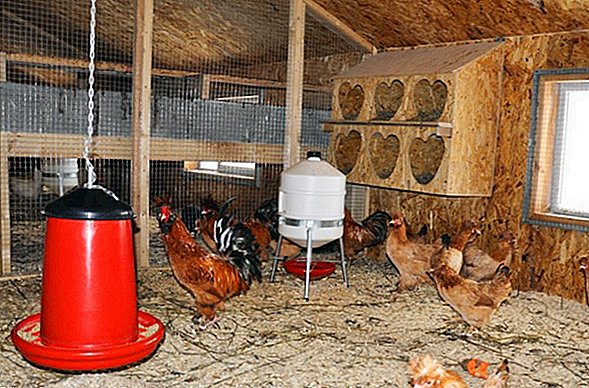
- If there is no permanent construction of fences, it is necessary to change the places of feeding troughs and drinking more often.
Read more about how to make an automatic feeder and drinker for chickens with your own hands.
- To prevent birds from swallowing harmful microorganisms, it is better to place containers for food and water on platforms elevated from the ground.
- If water accumulates in feeding places, it is better to organize a drainage drain there.
- Every day should be cleaned and disinfected with a solution of formaldehyde containers for drinking and feed.
- If it is not possible to regularly change feeding sites, the land around them is treated with chemical solutions.
- Add iodine preparations (potassium iodide, sodium iodide, lyugolevsky solution, etc.) to water or feed. This should last no more than 10 days in a row, then you need to take a break.
- To prevent infection from other individuals, copper sulfate solution is poured into the water (1: 2000). The course is 5 days.
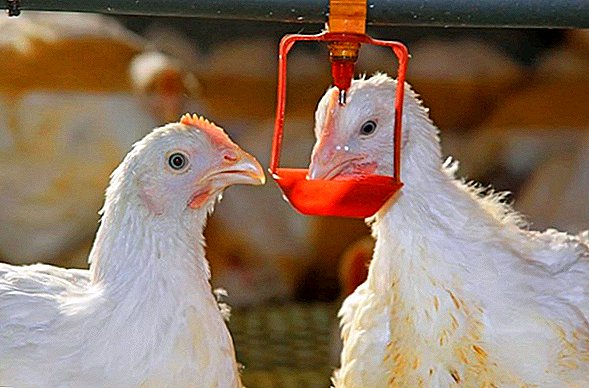
- Ventilate the room regularly. It is desirable that there was a natural aeration.
- Feed the birds with quality feed prepared according to the standards.
Important! Copper sulphate is not a panacea, and it is often not recommended to use it too often.
Now you know what aspergillosis is and how to fight it. In time using the necessary medicines, as well as measures to prevent and disinfect the premises, you will be able to reduce the death of the bird or even protect the birds from infection.
Reviews from the network
Note: The reaction is carried out only in glassware, the reaction goes with a large release of heat !!! The plastic will melt !!!





